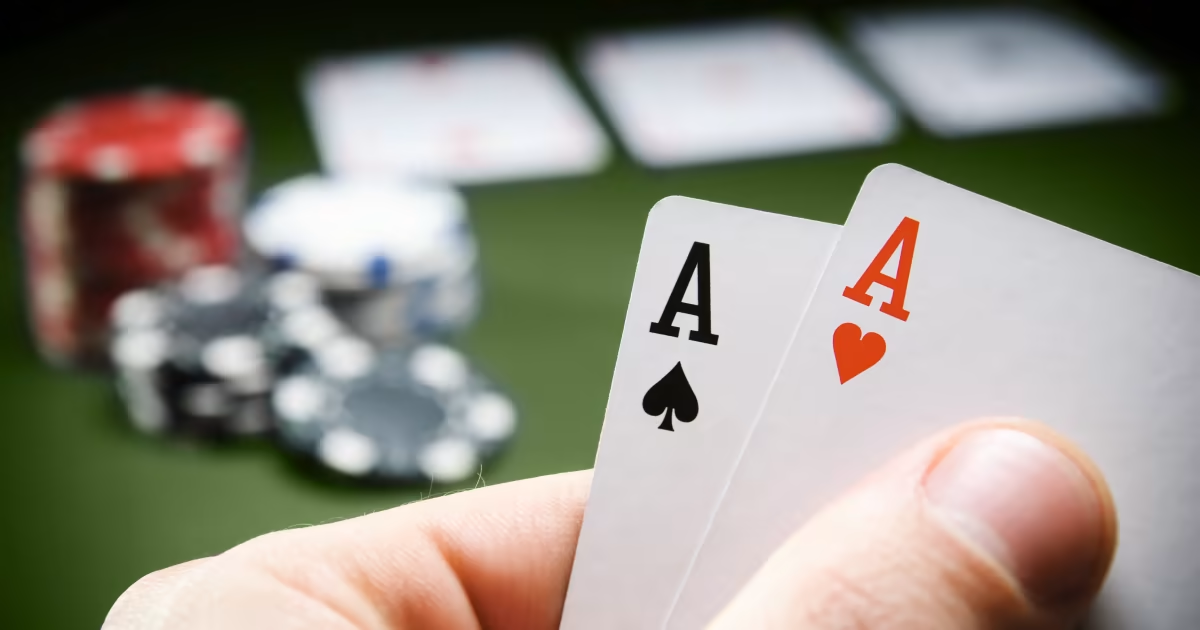Introduction
The game of chance I played is a variation of Blackjack called 十點半 (shi dian ban). In English, think of the literal meaning as 10 and a half. The rules are very similar to Blackjack, but instead of getting a count of 21, players need to aim to get a count of 10 and a half points (hence the name of the game). I couldn’t find the origin of Shi Dian Ban, but it’s a popular poker game usually played with physical cards in Taiwan. Since this is a variation of Blackjack, which is believed to originate in French casinos around 1700, I suspected someone modified the rules to create a similar version. I played this game in person with other players as I couldn’t find an online version.
Central Argument
Shi Dian Ban puts people at risk of addiction through its mechanics of “hitting” or “standing” that leverages elements of luck and human’s materialistic psychological needs of acquisition, propelling users to continue the game. Compared to other games of chance such as slot machines, Shi Dian Ban introduces more autonomy and has no machineries involved. With the combination of randomness and autonomy, this game fosters a sense of excitement and competition, engaging players to keep playing.
Analysis
I would categorize this game as a low skill and high luck game, as the only skill required for players is deciding whether to “hit” or “stand” depending on the current accumulative points of their cards. For more advanced players, they could implement more advanced strategies by observing and remembering the cards that have been drawn in the previous rounds. Since average players rely primarily on luck, the game feels relatively balanced to all players. In other words, players believe everyone has an equal chance of winning and the main factor is based on luck (i.e. getting better cards). The emotions they experience attribute greatly to addiction. Whenever players decide to “hit,” they experience a dopamine rush when the drawn cards add to their points without “busting.” The process of waiting for cards to drawn also create a sense of excitement and suspense. If the drawn card causes them to “bust,” they experience the near-miss sensation and immediately play the next round due to cognitive regret, where they circumvent the regret of almost winning this time by playing again. Assuming players obtain some money when winning, they also experience the psychological need of acquisition and would continue playing more rounds in hope to acquire more money. The repeated loop of these sensations therefore put people at risk of addiction. When I played with my family during Chinese New Year in the past, I’ve definitely fell into this mentality and bet more money on the sequential round thinking I’m on my lucky strike. In fact, when I was playing and thought that the dealer was unlucky, I would also bet more money thinking that I have better luck.
Despite the cards are drawn randomly, the decision aspect of the game provides players a sense of autonomy in the self-determination theory. This is similar to the mechanics implemented in the slot machine, where the stop button seemingly provides players a sense of control, albeit no machinery is involved in Shi Dian Ban. In this case, the cards are analogous to the random number generator (RNG) used in the slot machine and decision of “hitting” and “standing” is similar to the stop button. While both provide an illusion of control, the slot machine is based purely on chance whilst this game does allow players to strategize depending on their points and other players’ cards. The other key difference is theband mechanics to continue the game. With its design, the slot machine provides immediate visual feedback and near-miss sensation when the symbols don’t match on the baseline. By putting in more coins, players can immediately enter the next spin. However, Shi Dian Ban has a lower risk of addiction as players experience near miss sensation after doing mental calculation of the points, which is not an immediate visual feedback. In order to continue, they need to wait until all players are done with this round. If we consider this as a game loop, the slot machine allows players to update their mental model faster than this game with the fast feedback and limited time for withdrawal, introducing higher risk of addiction.
Finally, as a unilateral competition luck-based game, this game fosters a sense of competition among the players. Whenever one wins against the dealer, they satisfy the psychology need of dominance over the other players, as well as experiencing some sense of recognition. For instance, when I played with my family and won multiple times in a row, everyone recognized that I was winning multiple rounds. This also increases the possibility of addiction, since one hopes to continue receive that recognition from other players.
Overall, even though Shi Dian Ban has the risk of addiction, I believeit’s still a great game to play with friends or family. In fact, by removing the extrinsic motivation of money, it will greatly remove the probability of getting addicted.



